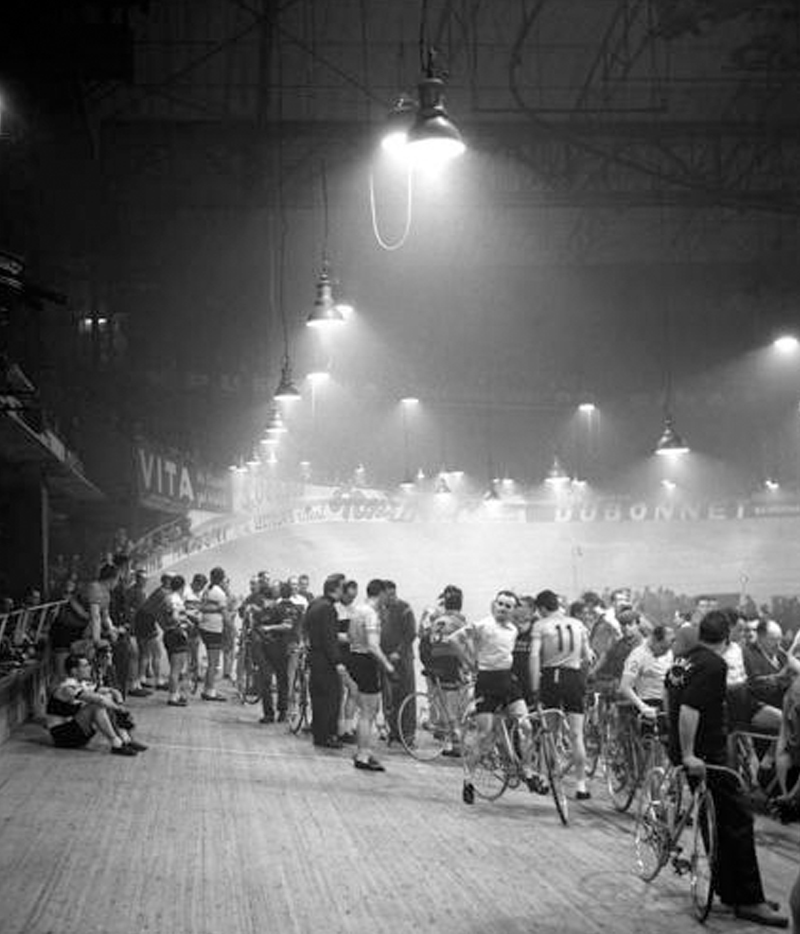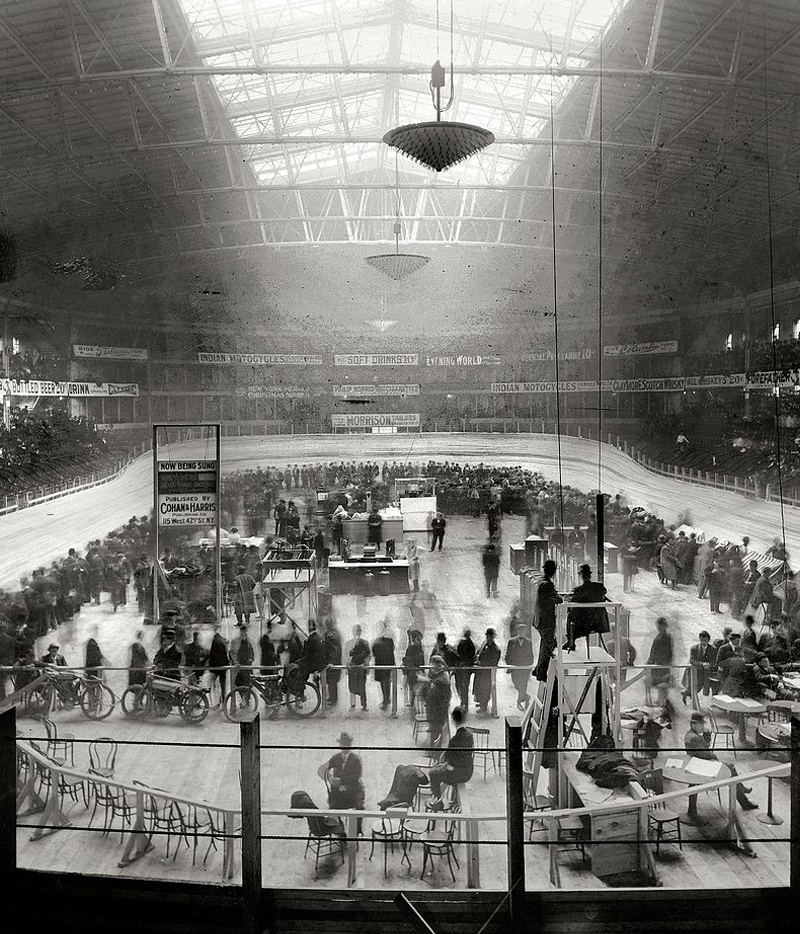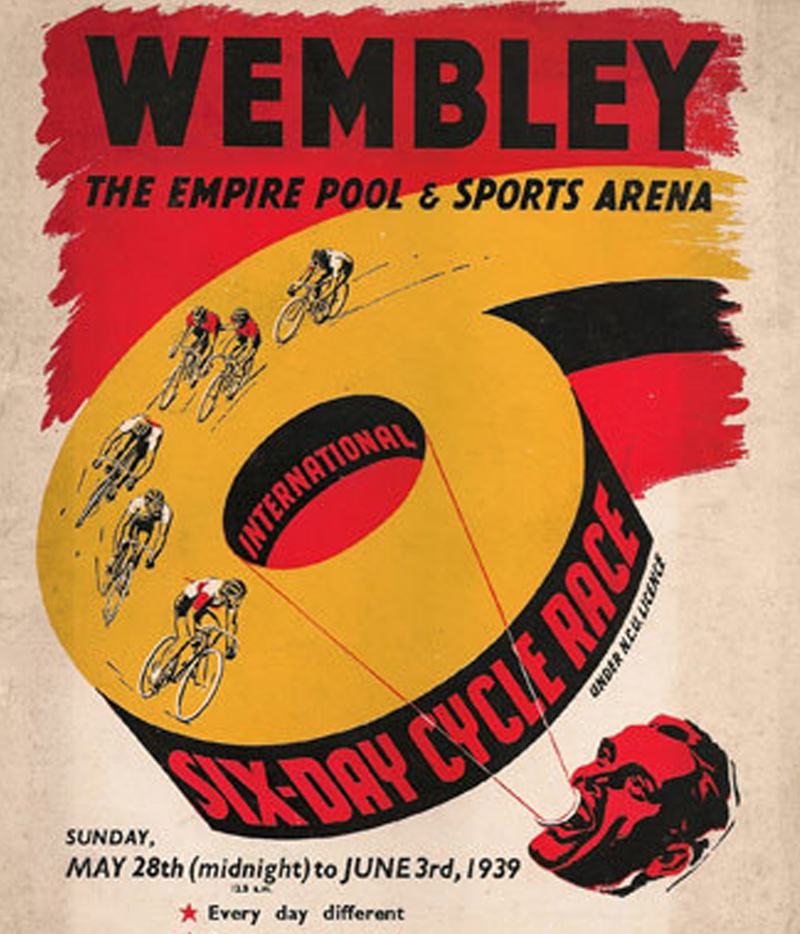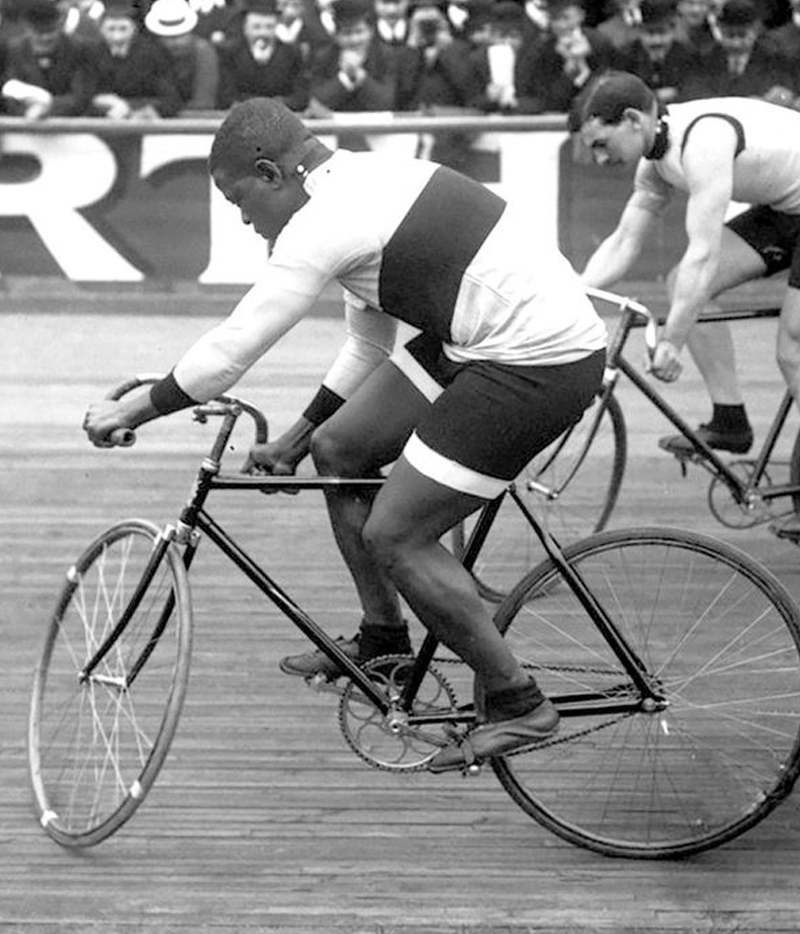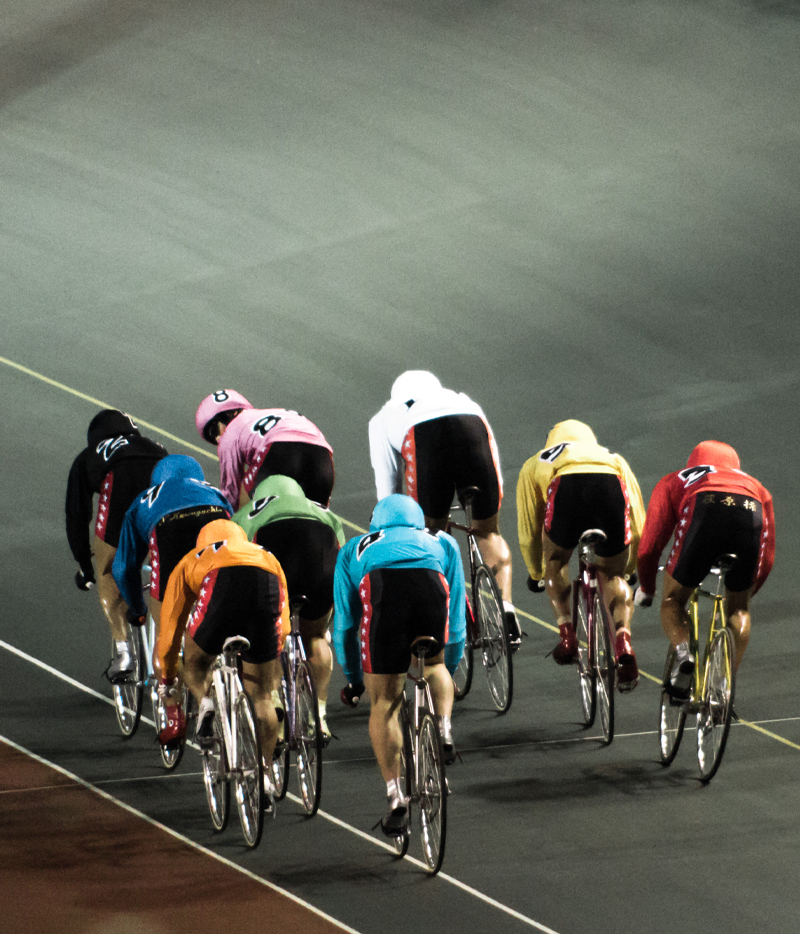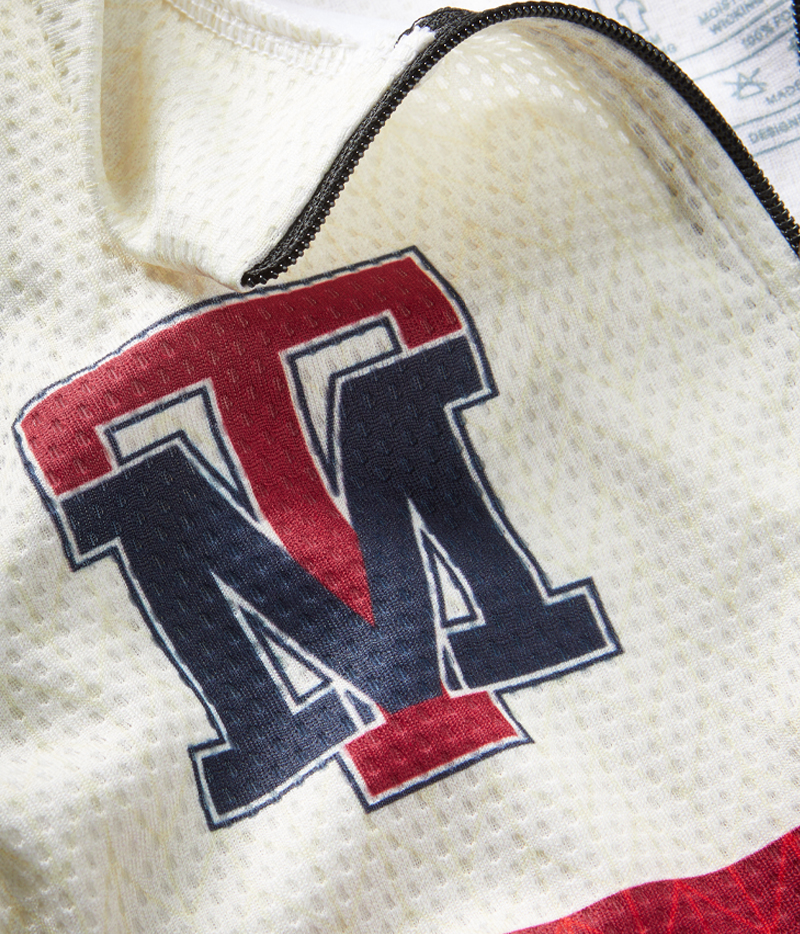YOU SPIN ME RIGHT ROUND
Round and round and round they go, hugging a painted line as the gathered crowd implores them to do it faster. A sculptured school gym floor, twisted into a pringle of two straights and two banks, ready to impale any mishap with french polished splinters. Brakes are frippery in this arena, there will be no stopping. No stopping until a victor is declared; the giant thighed sprinter or the agile omnium rider – two parts cyclist one part mathematician. Track cycling is a spectacle like no other, peculiar and chaotic, simple and complex. The crowd pleaser.
Cruel delight fills the velodrome, fighting for space with the cigarette smoke and alcohol fumes
The mountainsides of the Alps are riddled with fans but not one of them has paid an entry fee. Their reddies are procured through devious means, convoluted and corporate. The stadium environment is a lucrative one for the promoter and rider alike. The night out becomes a spectacle of entertainment; action packed, fun filled, scripted and guaranteed. Track cycling came into being purely because of one unashamed motive. Making money.
A love of novelty endurance competitions in 19th Century Britain saw a six day walking event attract 20,000 paying spectators. A cycling equivalent saw Bill Cann rack up over 1,000 miles and the promoter a healthy profit. Over the ocean in the US, crowds flocked to see riders struggle in their attempts to ride for 24 hours. A rider wobbles, his eyes droop, the crowd woops and cheers. He veers, he falls. More cheers. Cruel delight fills the velodrome, fighting for space with the cigarette smoke and alcohol fumes.
It is no longer contested, that the human animal is superior to the other animals. But this undisputed thing is being said in too solemn and painful way at Madison Square Garden. An athletic contest in which participants 'go queer' in their heads, and strain their powers until their faces become hideous with the tortures that rack them, is not sport. It is brutality.
– New York Times, 1897.
The law makers step in, no longer shall man race for 24 hours. A mere 12 hours shall be his limit. The promoters bow their heads in modest agreement before introducing two man teams. Each will ride only 12 hours, but the event can live on. On with greater distances, higher speeds and deeper crowds. The money piles up. The Madison is created.
The packed stands inspire harder racing, riders responding to the pleading for more. Turning themselves inside out in the pursuit of speed and distance. Empty seats only provoke humour, newspapers are read from the seat of a fixed wheel bike, writing letters on the handle bars as the banking pushes them on. A spectacle, even when not required.
Amongst this show business comes a special rider. Only the second ever African American World Champion, following Featherweight George Dixon. Marshall Major Taylor set numerous world records before he was even 20. He beat all comers in the US and then travelled to Europe and Australia to do the same there. He owned the track. He conquered all in the face of discrimination and created sporting triumph where often there was merely entertainment.
Track cycling has continued to grow, an Olympic sport in every edition in the modern age, save 1912. The colourful Japanese Keirin events are a staple part of their cycling culture. Team GB’s success in 2008 started the snowball effect that saw cycling become one the nations fastest growing passions. Six Day has returned and become a world wide sensation. That early love of action and atmosphere still lives on in the modern day velodromes as a perfect spectator sport.
The credit for track cycling’s popularity might belong with the money making promoters, the show boating riders or enthusiastic and often drunken crowds. But we like to think that the refinement of the sport is down to one man. And that’s why we’re pleased to announce that our special limited edition Major Taylor jersey is coming soon.
Sign up to our newsletter to find out just when!


